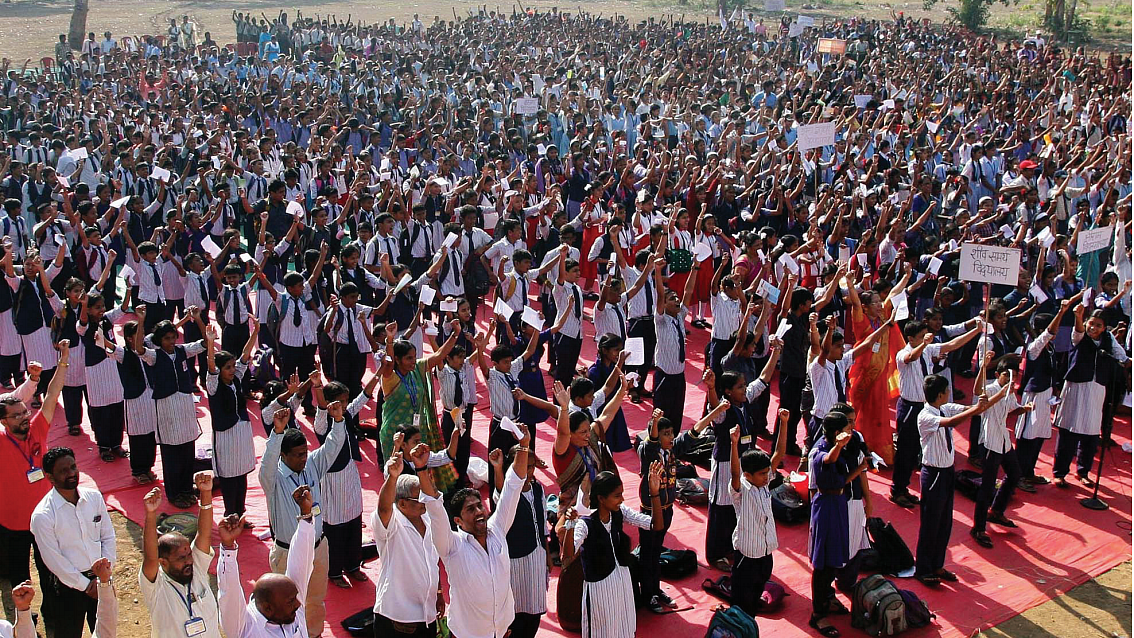Covid-19 data suggest there is a strong case for re-opening schools
While more children indeed got infected in the second wave, it was more due to entire families getting infected. Data indicate Covid-19 rarely kills children, points out Dr Amitav Banerjee

T he year 2021 had begun on an optimistic note. The country was limping back towards normalcy. Plans for reopening of schools were in place, when, out of the blue, we were hit by a vicious second wave. The impact this time was also felt in the rural areas and Covid-19 patients from villages travelled to urban areas to seek treatment adding to the crisis.
Waxing and waning of transmission in a pandemic is a natural phenomenon, notwithstanding the “illusion of control” by human beings. For the first time in public health history, we tried to control the course of a pandemic by human interventions. Like the “illusion of control” we also were lulled by the “illusion of success” when the first and now the second wave receded.
Cases are coming down sharply not so much due to human intervention but because the virus, possibly a more contagious variant, ran through most of the vulnerable people along with simultaneous development of herd immunity acting as a speed breaker.
Vaccination has reached less than 10% of the large Indian population and cannot account for the abrupt fall. Moreover, at the height of a pandemic vaccination has no impact as natural infections run through the population at a faster pace. The fall cannot be attributed to lockdowns either as during both the first and the second wave, cases kept increasing even after imposing restrictive measures. Maharashtra for example had the highest duration and number of lockdowns as well as a very high number of cases.
There are many concerns as the second wave recedes, foremost being the fear that the third wave will be harsh on children. This is based on the premise that as the adult population get vaccinated, the virus will continue to circulate in children. Besides, hospitals during the second wave saw more paediatric admissions. But then this was not due to children being more vulnerable this time but due to rise in absolute numbers across all age groups.
Not surprisingly, perspective of the clinicians is that in subsequent waves the impact would be felt mostly by children. However, hard data do not support these assumptions. Among the admitted cases, the proportion of children 0-18 years was between 2-5% in both the first and second waves. Data mining at global level also indicate that children have negligible chances of severe disease and death compared to adults.
In a paper published in the UK journal Public Health, researchers analysed pooled data from seven countries which had faced the fury of the pandemic. They calculated child mortality from Covid-19 and compared it with deaths from other causes in children during the study period.
During the three-month study period, there were 44 deaths in children among the 42,846 confirmed cases of Covid-19, giving a case fatality rate of 0.1%. For every detected case there are 20-30 undetected cases, which would put the infection fatality rate in the age group 0-18 years below 0.005%.
In the same period the authors found 13,200 deaths from other causes, most frequent being 1,056 deaths due to accidents, 308 from lower respiratory diseases and 107 from influenza. Covid-19 in children contributed to only 0.33% of all deaths. The data indicate that Covid-19 rarely kills children. Even at the height of the pandemic 99.67% of deaths in children were due to causes other than Covid-19.
Besides deaths, other concerns are that the children can infect elderly family members or drive community transmission by acting as super-spreaders. Resolving such issues are important for making informed public health decisions such as reopening schools.
The Swedish experience can provide some answers. Sweden was perhaps the only country to keep schools and pre-schools open during the course of the pandemic. A study by Karolinska Institute among Swedish school children who were seriously affected by Covid-19 has been published in the New England Journal of Medicine.
They found that serious Covid-19, defined as needing treatment in an intensive care unit (ICU), was rare among school children despite schools being open during the pandemic. Only one child in 130,000 was treated in an ICU during the four-month period of the study. A total of 15 children were admitted in the ICU. Seven of them had multi-inflammatory syndrome (MIS-C), which has been linked to Covid-19. Four of them had underlying diseases. None of the children died. The most common time spent in the ICU by the children was four days.
Can children, while not suffering themselves, act as super-spreaders infecting elderly family members or drive community transmission? An overview of the available evidence in the peer reviewed journal, Pediatrics, titled, ‘Covid-19 Transmission and Children: The Child Is Not to Blame’, is reassuring.
Studies of dynamics of Covid-19 transmission within families reveal that in majority of cases, the child developed symptoms after adults in the household, suggesting that the child was not the source of infection and that children most frequently acquire Covid-19 from adults rather than transmitting to them. Similar findings have been reported from China.
What about transmission in school children spilling over to the community? The available evidence suggests that transmission in schools is less important in community transmission of Covid-19 than initially feared. This is in sharp contrast to influenza, for which transmission among school children is well established as a driver of community transmission.
Available evidence actually suggest strongly that we can move cautiously forward and give a serious thought to reopening schools.
This is now necessary to avoid long term educational, social and psychological setbacks among the young generation.
(The writer is Professor & Head, Community Medicine and Clinical Epidemiologist at Dr DY Patil medical college, Pune)
Follow us on: Facebook, Twitter, Google News, Instagram
Join our official telegram channel (@nationalherald) and stay updated with the latest headlines